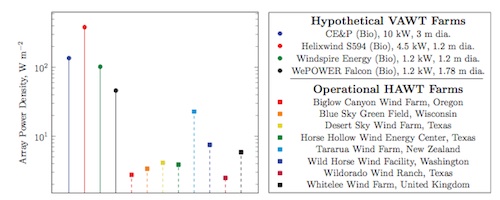Oregon wind farm neighbors refuse noise waiver payments, seek buyouts
Human impacts, News, Wind turbines Comments Off on Oregon wind farm neighbors refuse noise waiver payments, seek buyoutsA few months back, there was a bit of a news and comment flurry when the Shepherd’s Flat wind farm announced plans to pay neighbors $5000 for noise wavers, in order to build turbines closer to homes than Oregon’s unusually strict 36dB noise limit would allow. While the plan was dissed by many as an attempt to buy off neighbors, it seems to me that agreements like this are a valid way of addressing concerns about noise, especially in that they provide local authorities an avenue that may help them justify larger set-backs (or lower decibel limits) to protect residents who don’t want to hear turbines, while allowing developers to arrange exceptions with people who either don’t care about noise or feel that a payment is fair compensation.
But of course, noise waver or easement provisions don’t guarantee that the developer can build turbines closer to every resident. Caithness Energy is dealing with this in Oregon now, as this unusually frank article details. The entire article is important reading for nearly anyone working on this issue, but here are a few highlights:
Richard and Joanne Goodhead were clear from the start that they were not willing to live with turbine noise of up to 50dB, as the waiver would allow, and told Caithness, the developer, they wanted to be bought out. “(The Caithness representative) said ‘We’re not in the real estate business,’ Goodhead said. ‘I said, fine — I’m not in the windmill business.’” After a month of negotiations, which included offers of $6000 per year for 20 years, and later, the revenue from one turbine, Caithness relented, and bought the Goodhead’s land and home.
Two other homes near the Shepherd’s Flat wind farm, which is still under construction, have been sold; one was bought by an attorney who works for Caithness, acting on behalf of another local landowner who is part of the wind project.
Invenergy’s Willow Creek wind farm, just south of Shepherd’s Flat, has also been struggling with noise issues, finding it difficult at times to meet the 36dB limit. According to the Goodheads, the local antelope population has noticeably declined since it began operating.
Read more: http://www.statesmanjournal.com/article/20101227/UPDATE/101227031/Wind-farm-splits-neighbors-who-take-cash-or-leave#ixzz19WgqwrR2



